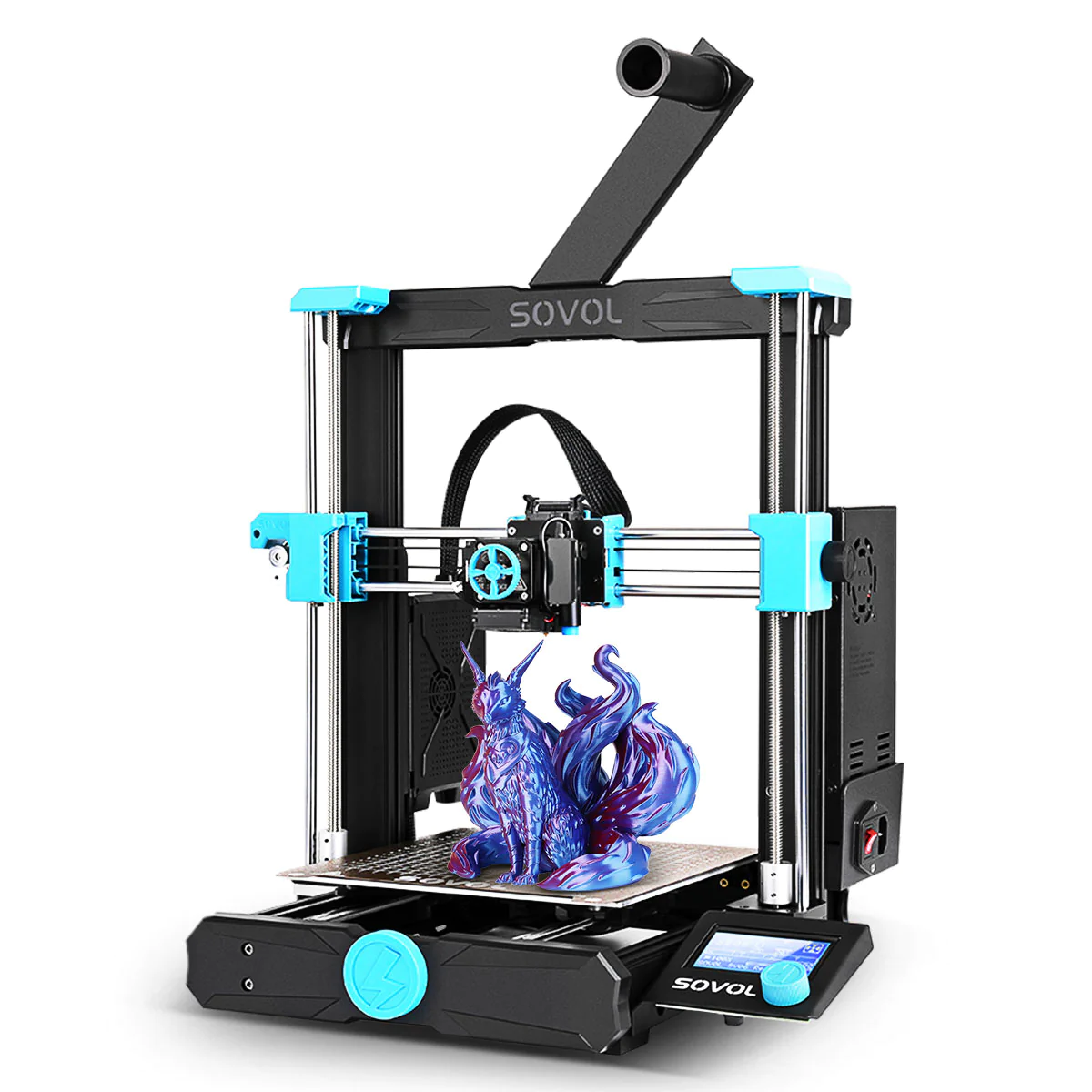Compare SV06 vs A3V3
Comparison between the best 3D printers
Choose the best 3D printer at the best price. The cheapest 3D printers are here.
Buy a 3D printer here with 3D Fila.
 |
 |
|
| Model | SV06 |
A3V3 |
| Printing Material | Filament | Filament |
| Buy Filament for Sovol SV06 | Buy Filament forGTMax A3V3 | |
| Estimated price | $259,00 | $1210,00 |
| Manufacturer | Sovol | GTMax |
| Release Year | 2022 | 2022 |
| Print Volume [mm] | 220x220x250 | 320x320x340 |
| Printer Size [mm] | 497x388x610 | 640x580x630 |
| Weight [kg] | 9 | |
| Power Loss Recovery | YES | YES |
| Enclosed printer | NO | YES |
| Bed Leveling | Automatic | Automatic |
| Filament End Sensor | NO | YES |
| Bed type | Heated | Heated |
| Power supply system | Direct Drive | Bowden |
| Standard nozzle | 0,4 | 0,4 |
| Maximum Nozzle Temperature [°C] | 300 | 295 |
| Maximum Bed Temperature [°C] | 100 | |
| Maximum printing speed [mm/s] | 80 | 180 |
| Filament holder | NO | YES |
| Camera for supervision | NO | NO |
| Recommended filaments | PLA, PETG, Tritan, Flex, ABS | PLA, PETG |
| Recommended slicers | Cura, Simplify, Slic3r, IdeaMaker | Cura, Simplify, Slic3r, IdeaMaker e outros |
| Maximum Resolution [mm] | 0,1 | 0,05 |
| Processor | ||
| Display | Mono | Display touchscreen 3,2'' |
| Power Supply | ||
| Connectivity | SD / USB | SD / USB / Wi-Fi |
| Operating systems | Windows, Mac, Linux | Windows, Mac, Linux |
| Date of registration in the system | 2023-03-02 | 2022-11-12 |
| Release date | 2022 | 2022 |
| Extra features | The Sovol SV06 printer stands out for having a direct-drive extruder, providing better performance when printing a variety of materials. It has linear rods for greater precision and smoothness in movements, as well as an automatic bed leveling system, eliminating manual adjustments. Its all-metal hotend supports a wide range of materials. The SV06 also features sensorless homing and Z-axis self-alignment, increasing reliability and ease of use. Compatible with Klipper software, it offers the possibility of upgrades to increase printing speed. | The PROCORE A3v3 is an advanced 3D printer with a robust structure and Wi-Fi connectivity. It stands out for its aluminum extruder with Dual Gear system for precision and traction, and a movement system with machined parts. It includes a 3.2-inch LCD Touchscreen Display, Wi-Fi remote control and a Core XY movement system for greater speed and precision. It offers an Allmetal Volcano hotend that reaches up to 295°C, is compatible with various filaments and has an energy saving system, reducing consumption by up to 75%. |
| Support for multiple colors and materials (AMS and CFS) | NO | NO |
Notes * |
||
| Cost-benefit | 6 / 10 | 6 / 10 |
| Hardware | 0.6 / 10 | 3 / 10 |
| Tela | . | . |
| Print volume | 3 / 10 | 4 / 10 |
| Performance | 0 / 10 | 1 / 10 |
Conclusion |
| In comparing the Sovol SV06 and the GTMax A3V3 3D printers, several key differences emerge that cater to different user needs and budgets. The Sovol SV06, with its more accessible price, offers a compact print volume and lightweight design, making it suitable for hobbyists or those new to 3D printing. Its direct-drive extruder allows for enhanced performance with various materials, while features like automatic bed leveling and compatibility with Klipper software provide ease of use and potential for upgrades. However, it lacks certain advanced features such as a filament end sensor and Wi-Fi connectivity, which could limit its functionality for some users. Conversely, the GTMax A3V3, positioned at a higher price point, boasts a larger print volume and a robust, enclosed design that is ideal for more serious projects or environments requiring temperature control. Its dual gear system and advanced Core XY movement system facilitate faster and more precise printing, making it well-suited for users who prioritize speed and quality. Additionally, the inclusion of a touchscreen display and Wi-Fi connectivity enhances the user experience, although it sacrifices some filament compatibility compared to the SV06. Ultimately, if budget is a primary concern and the user seeks a reliable entry-level printer, the Sovol SV06 is a strong candidate. Conversely, for those who require a more advanced machine with a larger build volume and enhanced features, the GTMax A3V3 offers greater potential, albeit at a higher cost. Both printers have their strengths, and the choice largely depends on individual priorities such as budget, desired features, and intended use for 3D printing. |

